Domestic easel anti-tank grenade launchers
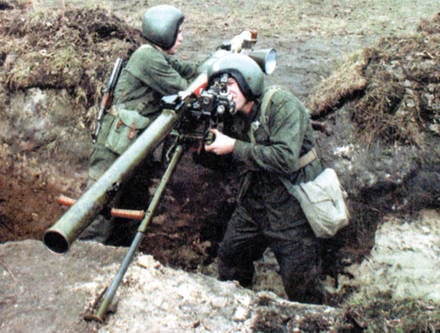 The intensive saturation of armored vehicles of armies of almost all countries of the world and its active use in all types of combined arms combat created conditions under which the need arose for equipping infantry with adequate means to combat enemy armored vehicles. The crisis of classic anti-tank melee infantry weapons (artillery shells; anti-tank guns; anti-tank grenades) led the gunsmith designers to a fundamentally new solution to this most serious problem - the creation of anti-tank complexes weapons: hand-held and easel anti-tank grenade launchers, thus laying the foundation for a new direction in the development of weapons business. Numerous local wars and military conflicts in the second half of the twentieth century have repeatedly shown that, in the fight against enemy armored vehicles, anti-tank grenade launchers are still one of the most effective means.
The intensive saturation of armored vehicles of armies of almost all countries of the world and its active use in all types of combined arms combat created conditions under which the need arose for equipping infantry with adequate means to combat enemy armored vehicles. The crisis of classic anti-tank melee infantry weapons (artillery shells; anti-tank guns; anti-tank grenades) led the gunsmith designers to a fundamentally new solution to this most serious problem - the creation of anti-tank complexes weapons: hand-held and easel anti-tank grenade launchers, thus laying the foundation for a new direction in the development of weapons business. Numerous local wars and military conflicts in the second half of the twentieth century have repeatedly shown that, in the fight against enemy armored vehicles, anti-tank grenade launchers are still one of the most effective means.Anti-tank grenade launchers have become one of the most powerful infantry weapons to combat tanks in close combat. This extremely effective and at the same time light, maneuverable and at the same time simple and cheap weapon allowed the infantrymen in the conditions of modern maneuverable combat to fight on equal terms with almost all enemy tanks. They have such high armor penetration that allows grenade launchers to successfully hit modern tanks of any type, destroy armored self-propelled guns and other mobile weapons. In addition, fragmentation grenades to combat enemy manpower significantly increased the effectiveness of these weapons.
The development of anti-tank melee weapons began in the Russian design bureaus and research institutes as early as 1930, when the head of the gas-dynamic laboratory (GDL), BS Petropavlovsky, developed and tested the first Soviet 65-mm anti-tank anti-tank gun. However, work on it was soon stopped due to the low armor penetration and low accuracy of the armor-piercing rocket grenade. L.V. Kurchevsky also went the same way by proposing to the Red Army Artillery Directorate two samples of 37-mm dynamo-reactive anti-tank rifles of his own design, which entered service with the Red Army in 1932 year. However, the operation of these guns (more correctly - reactive RPGs) among the troops revealed significant structural flaws in these weapons, including: their lack of maneuverability; low armor penetration, as well as the danger to the shooter in operation, due to the lack of design of the munition. In this connection, already in 1935, the 37-mm PTR Kurchevsky is removed from service. And only the Great Patriotic War in the most decisive way helped to find a cardinal solution to this complex issue. From the middle of 1943, when the newest German armored vehicles and the main Soviet melee weapons — anti-tank guns and grenades — went on the Eastern Front in ever-increasing quantities, became increasingly ineffective in front of the powerful armor of the enemy, our infantry needed a new weapon with a high degree of reliability of defeat. A thorough analysis of the combat experience of the use of weapons and equipment, carried out by experts of the State Aviation Administration showed that the most promising means of dealing with enemy armored vehicles is a weapon using the jet principle of projectile movement. Back in 1942 – 1943, our allies in the anti-Hitler coalition handed over to the command of the Red Army their newest anti-tank weapons, the Piat and the American Bazuka M 1 anti-tank grenade launcher, to study. And soon, in the autumn of 1943, the first captured German RPGs - the dynamo-reactive Panzerfaust Klein 30 M and the reactive Offenrohr - fell into the hands of Soviet gunsmiths, which made it possible to draw concrete conclusions about the development of similar weapons abroad, which stimulated the conduct of similar work in the Soviet Union.
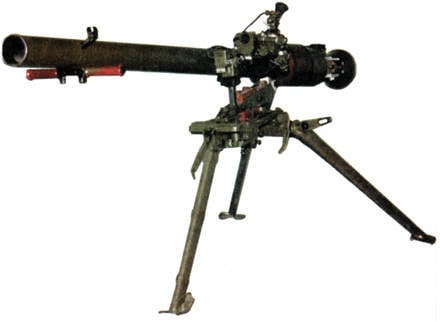 The absence of such powerful weapons as anti-tank grenade launchers in the Red Army at the final stage of the war, in addition to design flaws affecting the many months of testing, is also due to the fact that neither the Commissariat of Defense nor GAU, the most important body that supplied the front with weapons and ammunition , in time, there was no objective assessment of the extremely high combat qualities and excellent production and economic characteristics of the first German faust cartridges that appeared in 1943 year. There were no energetic supporters of such weapons among the top commanders of the Soviet Armed Forces, since it was short-sighted that the anti-tank rifle and hand-held anti-tank grenades were enough to fight the infantry against German tanks, and the factors of the constant growth of German armored vehicles were completely ignored. As a result, during the Great Patriotic War, the Soviet soldiers did not receive weapons, similar to what the enemy had, although our gunsmiths created more than one anti-tank grenade launcher design, which in its fighting qualities were not inferior to the best German-American grenade launchers. It was only after the war that the Soviet tank armies, who had lost more than 800 combat vehicles from 1200 that took part in the storming of Berlin, and a large number of them, were burned by “faustniki” when our military commanders didn’t burn they simply turned their attention to this powerful melee weapon, but also took all measures to ensure the most urgent adoption of anti-tank grenade launchers by the Red Army.
The absence of such powerful weapons as anti-tank grenade launchers in the Red Army at the final stage of the war, in addition to design flaws affecting the many months of testing, is also due to the fact that neither the Commissariat of Defense nor GAU, the most important body that supplied the front with weapons and ammunition , in time, there was no objective assessment of the extremely high combat qualities and excellent production and economic characteristics of the first German faust cartridges that appeared in 1943 year. There were no energetic supporters of such weapons among the top commanders of the Soviet Armed Forces, since it was short-sighted that the anti-tank rifle and hand-held anti-tank grenades were enough to fight the infantry against German tanks, and the factors of the constant growth of German armored vehicles were completely ignored. As a result, during the Great Patriotic War, the Soviet soldiers did not receive weapons, similar to what the enemy had, although our gunsmiths created more than one anti-tank grenade launcher design, which in its fighting qualities were not inferior to the best German-American grenade launchers. It was only after the war that the Soviet tank armies, who had lost more than 800 combat vehicles from 1200 that took part in the storming of Berlin, and a large number of them, were burned by “faustniki” when our military commanders didn’t burn they simply turned their attention to this powerful melee weapon, but also took all measures to ensure the most urgent adoption of anti-tank grenade launchers by the Red Army.Only in 1950, the complex consisting of: 82-mm SG-82 antitank anti-tank grenade launcher and SG-82 anti-tank caliber anti-tank grenade was adopted by the Soviet army. This type of weapon was defined as a reusable recoilless anti-tank weapon with cumulative ammunition. The grenade launcher had a thin-walled smooth barrel, without rifling, which consisted of two parts: muzzle and breech, which were connected to each other by a coupling. A self-retracting firing mechanism, an aiming device and a shoulder rest were attached to the barrel. The barrel was mounted on a machine with a wheel course that allowed to carry a grenade launcher on the battlefield. The barrel could be installed in a combat or field position. The PG-82 anti-tank grenade consisted of a shaped-charge warhead with a conical shaped steel funnel; a jet engine with a stabilizer of six rigid feathers and an aerodynamic ring, as well as a fuse and fuse. Tubular nitroglycerine powder was used as a charge in a jet engine, which ensures stable operation in summer and winter conditions. The grenade, when fired, received speed under the action of the reactive force of the engine, the powder gases flowed back from the engine nozzle and then through the open breech of the barrel, which balanced the recoil. The work of the jet engine continued on the trajectory after the grenade was removed from the barrel, therefore, to protect the calculation from the action of powder gases, the grenade launcher had a light folding shield and under it a protective canvas apron. In addition, a special socket, a gas collector, was attached to the muzzle of the barrel. Glazed viewing windows in the shield were automatically overlapped with protective metal flaps when fired. The grenade launcher was serviced by three people: the gunner, the loader and the grenade carrier. A grenade launcher was loaded from the breech breech. The guidance was carried out manually using a mechanical sight, while the barrel rested on the machine, and the gunner rested a special emphasis on the shoulder, holding the trigger handle with his right hand. The mass of the LNG-82 grenade launcher with a machine was 38 kg. The range of a direct shot of a mounted grenade launcher was twice the direct range of a hand-held anti-tank grenade launcher RPG-2 and was 200 m. Grenade PG-82 mass 4,5 kg provided armor penetration throughout the firing range (up to 1000 m) 175 mm. Subsequently, with the aim of expanding the scope for the grenade launcher, a fragmentation grenade OG-82 was developed, which also had a jet engine. The firing range of the fragmentation grenade was 700. The fragmentation grenade greatly expanded the combat capabilities of the SG-82. The SG-82 machine-gun grenade launchers were in service in anti-tank platoons of rifle and motorized rifle battalions.
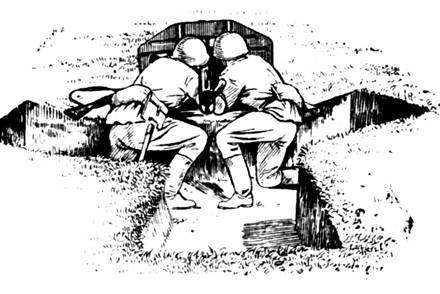 At the same time, since SG-82 did not have high combat qualities and could not hit the enemy's manpower at long distances, and also considering the fact that potential opponents put into operation new more powerful tanks, the USSR Ministry of Defense at the beginning of the 1950's years announced a new competition to create an improved machine-gun grenade with a mass - no more than 100 kg; armor penetration - 200 – 250 mm, as well as the ability to defeat enemy personnel at a distance - up to 4 km.
At the same time, since SG-82 did not have high combat qualities and could not hit the enemy's manpower at long distances, and also considering the fact that potential opponents put into operation new more powerful tanks, the USSR Ministry of Defense at the beginning of the 1950's years announced a new competition to create an improved machine-gun grenade with a mass - no more than 100 kg; armor penetration - 200 – 250 mm, as well as the ability to defeat enemy personnel at a distance - up to 4 km.The machine gun grenade launcher, which was presented to SKB-36, was created on the basis of SG-82 and was a dynamo-reactive design with a wide nozzle and a chamber and a loaded barrel. With the help of a hinge, the barrel was attached to a tripod machine with a removable wheel travel. The turning and lifting mechanisms are screw. The sighting devices made it possible to conduct not only flat fire, but also firing from closed positions. And although this weapon required major improvements, in 1954 it was adopted by the Soviet army under the designation “82-mm recoilless gun B-10”. At the same time, the X-NUMX-mm recoilless gun B-107, designed on the basis of SG-11, was adopted. B-122 (weight 10 kg) and B-86 (weight 11 kg), along with cumulative anti-tank shots, were also developed to the recoilless guns, as well as shots with a fragmentation grenade.
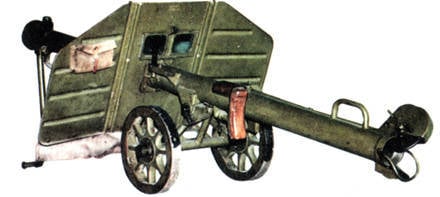 However, at the beginning of the 1960-s, the emergence of new, improved armored vehicles in countries whose armed forces were viewed as likely opponents of the Soviet army clearly demonstrated that the artillery of the infantry and paratroop battalions in service with anti-tank grenade launchers and recoilless SG-82 guns The B-10, as well as the 85-mm anti-tank gun D-48, no longer fully provide sufficient armored targets and adequate armor penetration indicators. Therefore, it was decided to create a more powerful machine-gun anti-tank grenade launcher under the theme “Spear”. Tactical and technical requirements for the development of a new grenade launcher, provided for: the total mass of the system - no more than 30 kg; armor penetration - 300 mm; the possibility of firing a shot without cleaning the gun barrel for five days, provided that at least 35 shots will be fired from LNG during this period. Such a new grenade launcher, which received the designation “machine-mounted anti-tank grenade launcher LNG-9”, was created in the State Union Design Bureau No. 47 (GSKB-47, Krasnoarmeysk), now GNPP "Bazalt" under the leadership of leading designers G. Е. Belukhina, E. AND. Dubrovina, V. AND. Baraboshkina, V. AP Zaitsev and M. М. Konovaeva. Simultaneously with the development of the gun project in GSKB-47, a new shot for it was designed - PG-9 B. According to the memoirs of one of the designers of this grenade launcher, it is the last requirement of the LNG-9 that owes its unusual caliber. The first prototype of a heavy-duty grenade launcher had a caliber of 70 mm, but during tests it turned out that it was impossible to send a grenade to the barrel after the eighth round due to the formation of a thick layer of soot in its channel. Then the designers decided to mount a centering girdle 1,5 mm in thickness in the head of the grenade, which should clean it from carbonation at the moment of passing the grenade through the bore. The idea turned out to be very fruitful, however, in order to apply a modernized shot, the trunk of the prototype had to be squandered to 73 mm. At the same time, the requirements for the total mass of the grenade launcher turned out to be impossible and, GRAU allowed to increase it to 50 kg. The new multifunctional grenade launcher complex included a smooth-bore recoilless system and shots of the dynamo-reactive type. A grenade was fired from a grenade launcher using a starting powder charge. At the initial part of the trajectory, a jet engine was switched on, which increases the speed of the grenade. The recoilless grenade during firing was ensured by the fact that a part of the powder gases was discharged back through the nozzle and the socket of the nozzle. At the same time, a reactive force was formed, which was directed forward, and it counterbalanced the recoil force. In addition, a more advanced design of a grenade jet engine was developed, and its thrust increased. Therefore, the grenade received a maximum speed of 435 m / s, which, in turn, led to an increase in the range of effective fire and, which is especially important for anti-tank weapons, affected the increase in the range of the direct shot. Also increased the frequency of hitting the target, easier aiming. An increase in the ratio of the initial velocity and the velocity provided by the jet engine led to an improvement in the wind resistance of the grenade, t. e.
However, at the beginning of the 1960-s, the emergence of new, improved armored vehicles in countries whose armed forces were viewed as likely opponents of the Soviet army clearly demonstrated that the artillery of the infantry and paratroop battalions in service with anti-tank grenade launchers and recoilless SG-82 guns The B-10, as well as the 85-mm anti-tank gun D-48, no longer fully provide sufficient armored targets and adequate armor penetration indicators. Therefore, it was decided to create a more powerful machine-gun anti-tank grenade launcher under the theme “Spear”. Tactical and technical requirements for the development of a new grenade launcher, provided for: the total mass of the system - no more than 30 kg; armor penetration - 300 mm; the possibility of firing a shot without cleaning the gun barrel for five days, provided that at least 35 shots will be fired from LNG during this period. Such a new grenade launcher, which received the designation “machine-mounted anti-tank grenade launcher LNG-9”, was created in the State Union Design Bureau No. 47 (GSKB-47, Krasnoarmeysk), now GNPP "Bazalt" under the leadership of leading designers G. Е. Belukhina, E. AND. Dubrovina, V. AND. Baraboshkina, V. AP Zaitsev and M. М. Konovaeva. Simultaneously with the development of the gun project in GSKB-47, a new shot for it was designed - PG-9 B. According to the memoirs of one of the designers of this grenade launcher, it is the last requirement of the LNG-9 that owes its unusual caliber. The first prototype of a heavy-duty grenade launcher had a caliber of 70 mm, but during tests it turned out that it was impossible to send a grenade to the barrel after the eighth round due to the formation of a thick layer of soot in its channel. Then the designers decided to mount a centering girdle 1,5 mm in thickness in the head of the grenade, which should clean it from carbonation at the moment of passing the grenade through the bore. The idea turned out to be very fruitful, however, in order to apply a modernized shot, the trunk of the prototype had to be squandered to 73 mm. At the same time, the requirements for the total mass of the grenade launcher turned out to be impossible and, GRAU allowed to increase it to 50 kg. The new multifunctional grenade launcher complex included a smooth-bore recoilless system and shots of the dynamo-reactive type. A grenade was fired from a grenade launcher using a starting powder charge. At the initial part of the trajectory, a jet engine was switched on, which increases the speed of the grenade. The recoilless grenade during firing was ensured by the fact that a part of the powder gases was discharged back through the nozzle and the socket of the nozzle. At the same time, a reactive force was formed, which was directed forward, and it counterbalanced the recoil force. In addition, a more advanced design of a grenade jet engine was developed, and its thrust increased. Therefore, the grenade received a maximum speed of 435 m / s, which, in turn, led to an increase in the range of effective fire and, which is especially important for anti-tank weapons, affected the increase in the range of the direct shot. Also increased the frequency of hitting the target, easier aiming. An increase in the ratio of the initial velocity and the velocity provided by the jet engine led to an improvement in the wind resistance of the grenade, t. e. 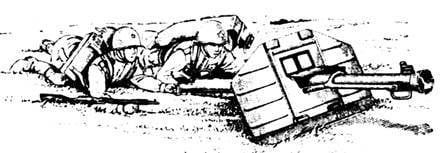 In 1962, he passed his successful ground test trials. And in the next year, 1963, a new grenade launcher complex “ammunition - weapon” in two versions: for the motorized rifle units of the Soviet Army - under the designation “73-mm heavy antitank grenade launcher LNG-9” (GRAU index - 6 Г6) and for parachute paratroopers Airborne Forces divisions - “73-mm LNG-9 D (amphibious) antitank grenade launcher” (GRAU-6 ГХNUMX index), differing from the LNG-7 only by the presence of removable wheel travel (9 kg mass), and also 15,9-mm PG- 73 B (9 PNNUMX) with the PG-7 anti-tank grenade arrived on servation antitank platoon infantry battalion in an APC, airborne battalions and battalions of marines.
In 1962, he passed his successful ground test trials. And in the next year, 1963, a new grenade launcher complex “ammunition - weapon” in two versions: for the motorized rifle units of the Soviet Army - under the designation “73-mm heavy antitank grenade launcher LNG-9” (GRAU index - 6 Г6) and for parachute paratroopers Airborne Forces divisions - “73-mm LNG-9 D (amphibious) antitank grenade launcher” (GRAU-6 ГХNUMX index), differing from the LNG-7 only by the presence of removable wheel travel (9 kg mass), and also 15,9-mm PG- 73 B (9 PNNUMX) with the PG-7 anti-tank grenade arrived on servation antitank platoon infantry battalion in an APC, airborne battalions and battalions of marines.The LNG-9 grenade launcher was designed to destroy tanks, self-propelled artillery installations and other armored targets, as well as to destroy enemy manpower and fire weapons. The grenade launcher was serviced by a crew consisting of: the commander of the grenade launcher, the gunner, the loader and the ammunition carrier. The calculation of four people was able to carry an LNG-9 grenade launcher in a disassembled (traveling) position for long distances, and also to quickly change firing positions (in a combat position). The mass of the grenade launcher without an optical sight was - 47 kg, and its maximum mass (complete with night sight) reached - 57,6 kg. The designers managed to create a perfect starting device (grenade launcher) with a trigger mechanism with an electric generator and a shutter, under which a lightweight and convenient tripod machine was developed (weighing 12,0 kg). When firing from the LNG-9, the destruction of tanks and other armored targets, as well as enemy fire weapons in structures and shelters was provided at distances up to 1300 m, and the tank fire was most effective within the direct shot range - 800 m. At this range, the trajectory height the grenade’s flight did not exceed 2 m, i.e., the average height of the tank. When firing at a direct shot range, the frequency of hitting the tank during its frontal movement was such that in most cases, hitting the tank was achieved, as a rule, from the first shot. The presence of an optical sight PGO-9 ensured a high accuracy of pointing a grenade launcher. For aiming firing from a grenade launcher at night, besides a daytime optical sight, it was possible to use the PGN-9 night-time optical sight (GRAU index - 1 PN52), which significantly expanded the combat capabilities of machine-gun anti-tank grenade launchers, especially when shooting at night. The grenade launchers, which include this sight, were designated “LNG-9 N” and “LNG-9 DN”.
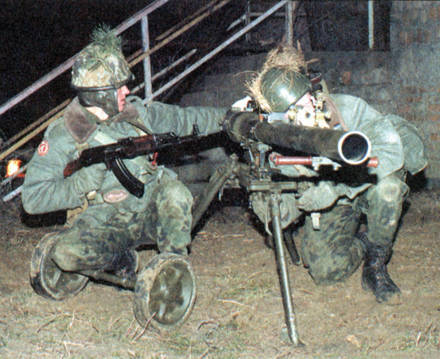 Mounted anti-tank grenade launchers LNG-9 / LNG-9 D significantly increased the combat capabilities of the infantry and paratroop units. The improvement of the existing and the emergence of new ammunition with a fragmentation grenade to the LNG-9 allowed them to be successfully used not only to destroy tanks and other armored targets, but also to destroy enemy manpower and fire weapons, especially in combat situations in the city and mountainous and wooded areas. The successful design of the LNG-9 grenade launcher, the reliability of the action and the high armor penetration with a small caliber grenade served as the basis for the development of a new artillery weapon system. consisting of 73-mm smoothbore gun 2 A28 "Thunder", active-reactive shots PG-15 in a cumulative antitank grenade PG-9 shot and active exhaust-15 in a fragmentation grenade OG-9, taken on arms infantry fighting vehicle BMP- 1 and BMD-1 airborne combat vehicle. The production of LNG-9 grenade launchers was organized in Tula.
Mounted anti-tank grenade launchers LNG-9 / LNG-9 D significantly increased the combat capabilities of the infantry and paratroop units. The improvement of the existing and the emergence of new ammunition with a fragmentation grenade to the LNG-9 allowed them to be successfully used not only to destroy tanks and other armored targets, but also to destroy enemy manpower and fire weapons, especially in combat situations in the city and mountainous and wooded areas. The successful design of the LNG-9 grenade launcher, the reliability of the action and the high armor penetration with a small caliber grenade served as the basis for the development of a new artillery weapon system. consisting of 73-mm smoothbore gun 2 A28 "Thunder", active-reactive shots PG-15 in a cumulative antitank grenade PG-9 shot and active exhaust-15 in a fragmentation grenade OG-9, taken on arms infantry fighting vehicle BMP- 1 and BMD-1 airborne combat vehicle. The production of LNG-9 grenade launchers was organized in Tula.LNG-9 is a smooth-bore recoilless gun, whose operation is based on the dynamo-reactive principle. When fired from a grenade launcher, the gases resulting from the combustion of the powder charge eject the grenade from the barrel bore, and a part of the powder gases is discharged back through the nozzle. This creates a reactive force that balances the force of recoil. As in the manual anti-tank grenade launchers, in the LNG-9, the grenade gets the initial velocity under the pressure of the gases of the starting powder charge in the barrel, and then, by switching on the jet engine, increases the speed to maximum. 73-mm shot PG-9 B consists of: a cumulative grenade and a starting powder charge. Grenade PG-9 has a caliber warhead with a ganged piezoelectric fuse, a jet engine with an 6-blade stabilizer and two tracers. The starting charge consists of a metal charger (perforated tube with a diaphragm), a sample of nitroglycerin powder in a percale card case, an igniter charge from the AHP with an electric igniter and a boost unit. PG-9 B shot has a convenient quick-release assembly (bayonet-type) for connecting a powder charge to a grenade. Its mass is - 4,4 kg. When departing, the grenade gets the initial speed of 435 m / s, and the jet engine attaches additional speed to the feathered grenade, which accelerates it to 700 m / s, which significantly reduces its flight time, reducing, thus, the corrections to side wind and moving the target to ranges smaller than the direct shot. The engine starts to work after the departure of the ammunition from the barrel. An excess of powder gases is discharged back through a nozzle installed at the end of the gate. The armor penetration rate of the PG-9 B cumulative grenade is 300 mm, and the upgraded PG-9 BC shot - 400 mm, which at that time ensured the defeat of all types of tanks without dynamic protection and other equipment. When hitting the barrier, the fuse caused an explosion of a grenade with a fragment radius of up to 200 m. If after 4,0 – 6,0 seconds of flight there was no meeting with the obstacle, then the ray of fire of the self-destructive powder composition caused an explosion of the primer-detonator and the self-destruction of the grenade. The 73-mm OG-9 B jet type shot with a fragmentation grenade consists of: a fragmentation grenade; starting powder charge and fuse GO-2. The OG-9 fragmentation grenade has a head made of cast iron with an explosive charge of an “T” grade explosive and a stabilizer for grenade stability in flight. The stabilizer has a perforated tube and a crosspiece with eight ribs, which have bevels in the front section to ensure rotation of the grenade in flight; a shank with two rusks for fixing OG-9 H and a tracer. The powder charge of the exhaust gas-9 H is similar in structure and action to the powder charge of PG-9 P, but has a smaller mass of gunpowder of the “NBL-42” brand - 780 grams. To improve the reliability of holding the shank of the grenade in the charge adapter on the perforated tube, a ring with T-slots is installed. In the perforated tube under the T-shaped grooves drilled two holes. When fired, the powder gases of the igniter charge, passing through these holes, unbend the petals of the ring, fixing the adapter's stopper, which ensures the release of the shank only at the junction with the grenade. The fuse is a head, shock-instantaneous and inertial action, with a long-distance cocking 2,5 – 18 m (one protection level) intended to explode a grenade when meeting a target. For tightness of the fuse, the head of the housing is covered with a membrane, and to protect the membrane from accidental impacts, a safety cap with a check is put on it.
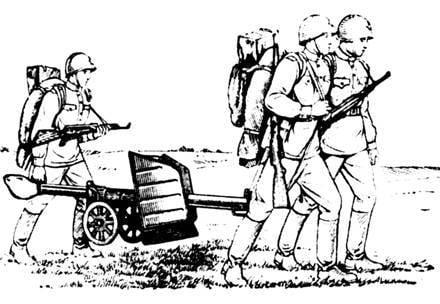 A mounted anti-tank grenade launcher LNG-9 consists of: a barrel with a bolt; machine tripod; electric mechanism for the production of a shot, as well as sights. The grenade launcher is mounted on a machine - tripod, having a device for fastening the barrel and mechanisms of vertical and horizontal targeting of the screw type. The machine has the ability to adjust when diluting the front leg and the block of the rear legs, which provides the barrel with the necessary pointing angles, allowing you to change the height of the line of fire from - 390 to - 700 mm. On the barrel are mounted: a permanent handle for rolling the weapon; mechanical sights in the form of a front sight and a bracket with a frame of a sight and a slider; protective casing - a fuse that protects the gunner from burn during shooting from a heated barrel; the mechanism for extracting the diaphragm with a tube after the shot; elements of the electric mechanism for the production of a shot. On the breech of the barrel is mounted shutter - in the form of a nozzle (through which the powder gases expire back, balancing recoil) with the mechanism of locking the barrel. For aiming shooting, the LNG-9 is used with an 4,2-multiple optical sight with a magnification with a field of view around 11 °, which is mounted on the barrel bracket. Loading a grenade launcher is made from the breech when the gate is open. The grenade is launched using an electric mechanism, the generator of which, together with the trigger mechanism and fuse, is mounted in the frame. Also in the composition of this mechanism includes a contact and a locking device that does not allow shooting grenades with the gate is not fully closed.
A mounted anti-tank grenade launcher LNG-9 consists of: a barrel with a bolt; machine tripod; electric mechanism for the production of a shot, as well as sights. The grenade launcher is mounted on a machine - tripod, having a device for fastening the barrel and mechanisms of vertical and horizontal targeting of the screw type. The machine has the ability to adjust when diluting the front leg and the block of the rear legs, which provides the barrel with the necessary pointing angles, allowing you to change the height of the line of fire from - 390 to - 700 mm. On the barrel are mounted: a permanent handle for rolling the weapon; mechanical sights in the form of a front sight and a bracket with a frame of a sight and a slider; protective casing - a fuse that protects the gunner from burn during shooting from a heated barrel; the mechanism for extracting the diaphragm with a tube after the shot; elements of the electric mechanism for the production of a shot. On the breech of the barrel is mounted shutter - in the form of a nozzle (through which the powder gases expire back, balancing recoil) with the mechanism of locking the barrel. For aiming shooting, the LNG-9 is used with an 4,2-multiple optical sight with a magnification with a field of view around 11 °, which is mounted on the barrel bracket. Loading a grenade launcher is made from the breech when the gate is open. The grenade is launched using an electric mechanism, the generator of which, together with the trigger mechanism and fuse, is mounted in the frame. Also in the composition of this mechanism includes a contact and a locking device that does not allow shooting grenades with the gate is not fully closed. 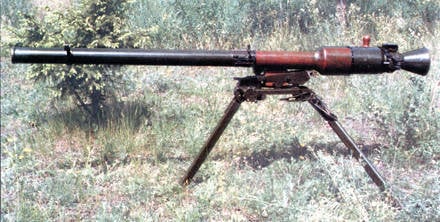 Unfortunately, the LNG-9 grenade launchers could not completely eliminate the shortcomings inherent in recoilless guns - the occurrence of a danger zone behind the weapon due to the outflow of gases from the barrel, which also unmasks the firing position of the grenade launcher, and is elevated compared to the rifle weapon level of the sound of a shot, which requires protection of the ears of the shooter and also revealing his location. Therefore, for grenade throwers there remains the need to observe special precautionary rules when firing. So, because of the high level of sound when fired, the shooting should have been carried out only in artillery helmets, reducing the sound of the shot. However, these and some other shortcomings that emerged during the operation and combat use of the LNG-9 anti-tank grenade launchers are fully compensated by the advantages of this grenade launcher (its ease and maneuverability combined with high combat effectiveness), which affected their widespread use throughout the world. When firing from the LNG-9, the presence of a dangerous zone behind the grenade launcher must be taken into account, because when firing a grenade launcher with powder gases and pieces of plastic discs (ejected from the nozzle), a dangerous zone is created in the 90 ° sector and up to 30 m in depth, therefore closer than 7 meters from the nozzle should not be any vertical obstacles, as well as prevent firing, if there is a distance less than 5 meters between the breech cut of the grenade launcher and any obstacle. In this case, the powder gases reflected from the barrier can hit the shooter himself. This should be taken into account in all cases, but especially if the grenade thrower is inside the building, in a trench, etc. And another prerequisite for firing from the LNG-9: when firing, you must be positioned so that the head of the above-caliber grenade is not lower 20 cm from the parapet of a trench, a wall or another object, then the stabilizer blades that open up when fired grenades will not touch them. The use of jet engines of grenades, working on the active part of the trajectory, makes it difficult to take into account corrections for side wind - and they are quite significant and therefore appropriate adjustments must be made when aiming.
Unfortunately, the LNG-9 grenade launchers could not completely eliminate the shortcomings inherent in recoilless guns - the occurrence of a danger zone behind the weapon due to the outflow of gases from the barrel, which also unmasks the firing position of the grenade launcher, and is elevated compared to the rifle weapon level of the sound of a shot, which requires protection of the ears of the shooter and also revealing his location. Therefore, for grenade throwers there remains the need to observe special precautionary rules when firing. So, because of the high level of sound when fired, the shooting should have been carried out only in artillery helmets, reducing the sound of the shot. However, these and some other shortcomings that emerged during the operation and combat use of the LNG-9 anti-tank grenade launchers are fully compensated by the advantages of this grenade launcher (its ease and maneuverability combined with high combat effectiveness), which affected their widespread use throughout the world. When firing from the LNG-9, the presence of a dangerous zone behind the grenade launcher must be taken into account, because when firing a grenade launcher with powder gases and pieces of plastic discs (ejected from the nozzle), a dangerous zone is created in the 90 ° sector and up to 30 m in depth, therefore closer than 7 meters from the nozzle should not be any vertical obstacles, as well as prevent firing, if there is a distance less than 5 meters between the breech cut of the grenade launcher and any obstacle. In this case, the powder gases reflected from the barrier can hit the shooter himself. This should be taken into account in all cases, but especially if the grenade thrower is inside the building, in a trench, etc. And another prerequisite for firing from the LNG-9: when firing, you must be positioned so that the head of the above-caliber grenade is not lower 20 cm from the parapet of a trench, a wall or another object, then the stabilizer blades that open up when fired grenades will not touch them. The use of jet engines of grenades, working on the active part of the trajectory, makes it difficult to take into account corrections for side wind - and they are quite significant and therefore appropriate adjustments must be made when aiming.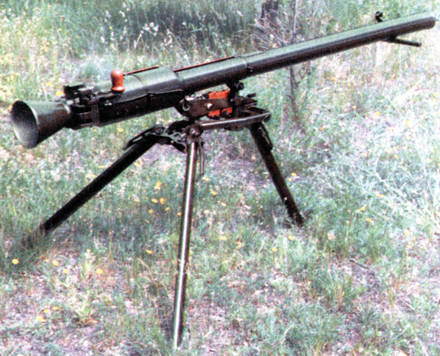 Adoption of the Soviet army at the beginning of the 1960-x grenade launchers, consisting of a manual (RPG-7) and easel (LNG-9) anti-tank grenade launchers, which are still in service in the Russian army, marked a new stage in the development of anti-tank grenade launchers weapons. Today we can safely say that the development of these complexes has brought our country to the forefront in the world in the field of grenade anti-tank melee weapons. The operational experience of the LNG-9 grenade launcher in the military and combat use in a number of hot spots showed it from the best side. This reliable and easy-to-maintain grenade launcher is in service with the Russian army to this day.
Adoption of the Soviet army at the beginning of the 1960-x grenade launchers, consisting of a manual (RPG-7) and easel (LNG-9) anti-tank grenade launchers, which are still in service in the Russian army, marked a new stage in the development of anti-tank grenade launchers weapons. Today we can safely say that the development of these complexes has brought our country to the forefront in the world in the field of grenade anti-tank melee weapons. The operational experience of the LNG-9 grenade launcher in the military and combat use in a number of hot spots showed it from the best side. This reliable and easy-to-maintain grenade launcher is in service with the Russian army to this day.
Information